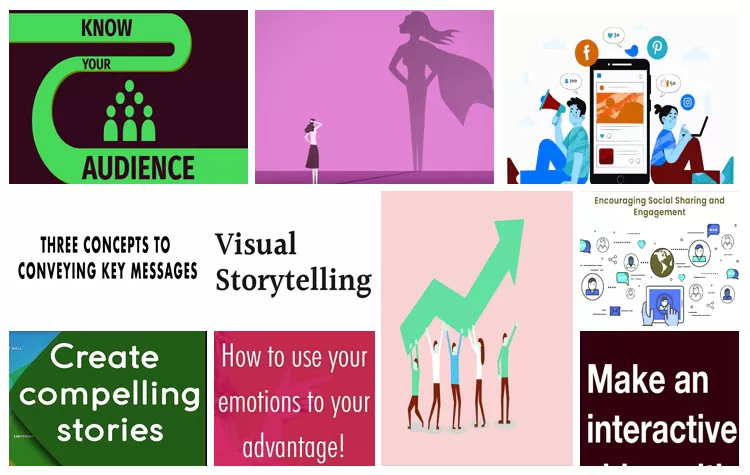Digital storytelling has matured to a point that is now one of the most crucial tools in communication and marketing, as well as bonding. The perfect online story will attract audiences; change the opinion of people, persuade them into action, or start ripples in the minds of others. Be you an entrepreneur, a content creator, or a marketer, learn to tell stories to amplify your online footprint. Here is a guide on how you can create compelling, engaging, and impactful stories online.
1. Know your audience
- Determine Your Target Audience: Understand whom you are speaking to through demographics, interests, and needs. If it is tailored to your audience, then your story will be more relevant to it.
- Research: Surveys, insights on social media, analytics are all good sources of information that help get into the psyche of preferences and patterns of behavior your audience might possess.
2. Define Your Key Message
- Determine Your Purpose: Decide what you want to do with your story. Do you want to instruct, entertain, or inspire? The more particular your purpose, the more singularly focused your story will be.
- Develop a Strong Theme: Develop a theme that enhances your universal message. A good theme works to orchestrate the rhythm of the story and helps make it memorable.
3. Develop a Compelling Story Form
- Classic Story Arc: Use the basic elements of storytelling-in other words, the introduction, rising action, climax, falling action, and resolution. This is the old-fashioned tried-and-true approach that keeps the audience glued from start to finish.
- Conflict and Resolution: Bring in challenges or conflicts your characters have to deal with along with how they can be resolved. It gives the impression of depth and keeps the audience interested.
4. Create Relatable Characters
- Strong character: It doesn't have to be a hero, but an ordinary man must also be relatable and character-defined. The audience sympathizes with characters which they can identify themselves.
- Share Your Personal Stories: If you feel safe, share your personal stories. Authenticity will help you create trust and rapport with your audience.
5. Visual Storytelling
- Add Multimedia Elements: Integrate images, videos, infographics, and audio to tell the story. These elements help the reader sharpen their concentration on the story and bring an abstract concept closer to common understanding.
- Use Uniform Branding: Your visuals have to be for your brand. Keep in mind that uniformity in color, font, and design will help in cohesion of storytelling image.
6. usage of emotion
- Tug heartstrings with your story: Put in a touch of either joy or sadness or excitement. It's one kind of emotional story that makes you reach out to the deepest core of the audience. It can actually further their interest
- Share personal stories: This is the best way of connecting. It is the personal and relatable stories that bring in emotions to the content and make it as effective as possible to create a better memory.
7. Make It Interactive
- Engage Your Crowd: With polls, quizzes, or even comments, you can keep the crowd in line. People are more likely to feel part of anything that constitutes a community and makes engagement.
- Exploitation of Storytelling Platforms: With Instagram Stories, Facebook Live, or interactive blogs, people can have engaging experiences in real-time.
8. Optimize for Different Platforms
- Tailor your content: Know that what may work well on one platform cannot be the same for the other. What will fit well on Instagram may not be perfect on LinkedIn since the categories of audiences attracted by the two are different.
- Use SEO Strategies: Make it visible using relevant keywords to the topic, meta descriptions, and any attention-grabbing headlines that would get noticed. Optimized content attracts a larger crowd.
9. Encourage Sharing and Engagement
- Use Call-to-Action: Ask your audience to do something by asking them to share your story or comment and join the discussion.
- Make shareable content: It can be infographics or quotes with short videos. The more shareable the content is, the more the reach will be.
10. Measure and Analyze Performance
- Track the engagement metrics: Through analytics, understand how your stories are working. Keep tracking the shares, comments, and audience engagements to know if your story works or not.
- Repeat and refine: Once you learn what it is that you learned from the analysis of your efforts, you fine tune your storytelling skills to fit whatever it is that your audience likes best. Try different formats and approaches based on what your audience responds well to.
Conclusion
A good story becomes all the more powerful if it's authentic and relatable. Know your audience, a great story, and multimedia will make things possible. Scale up your online presence and relationships with audiences by taking your art of storytelling to whole new levels.
